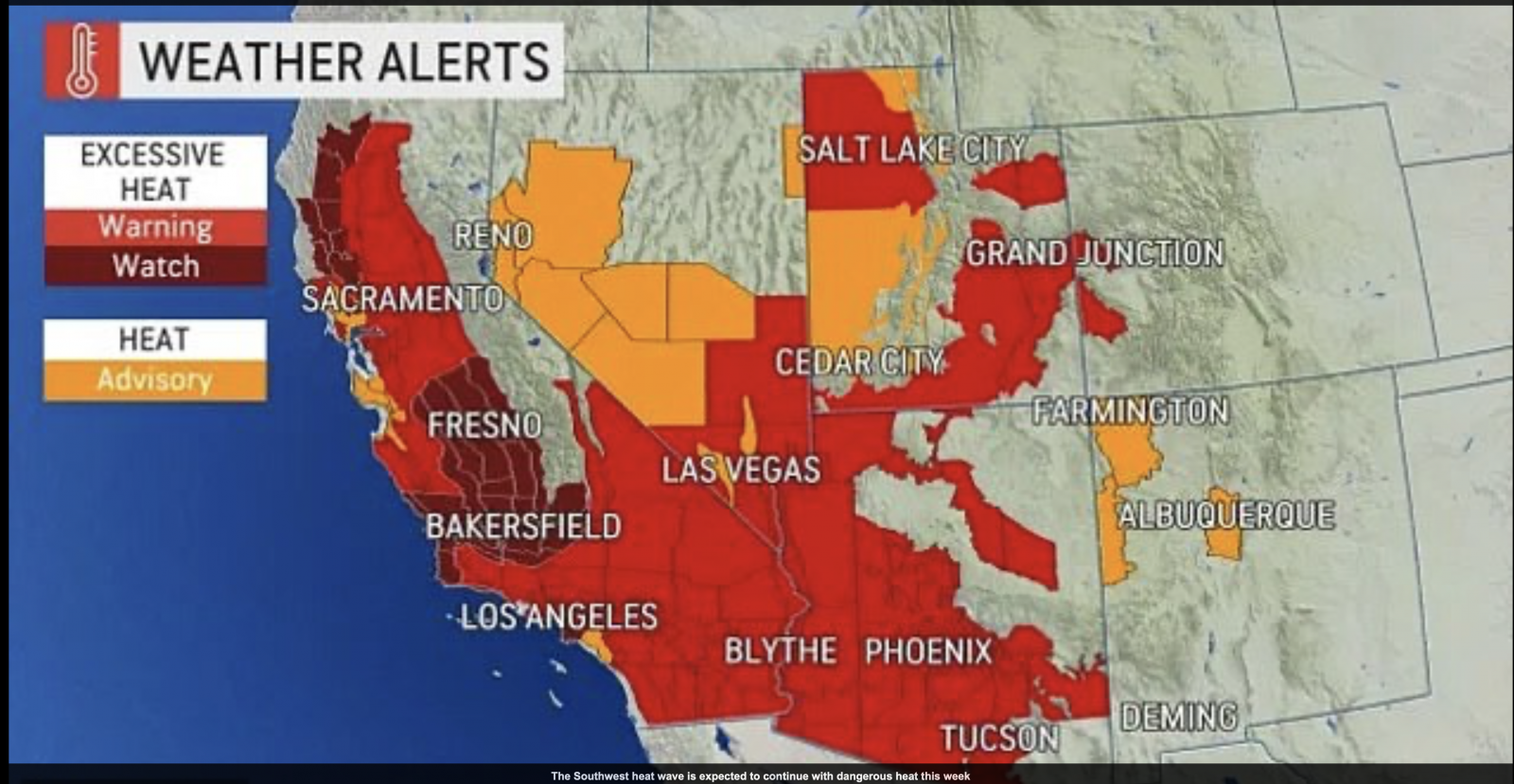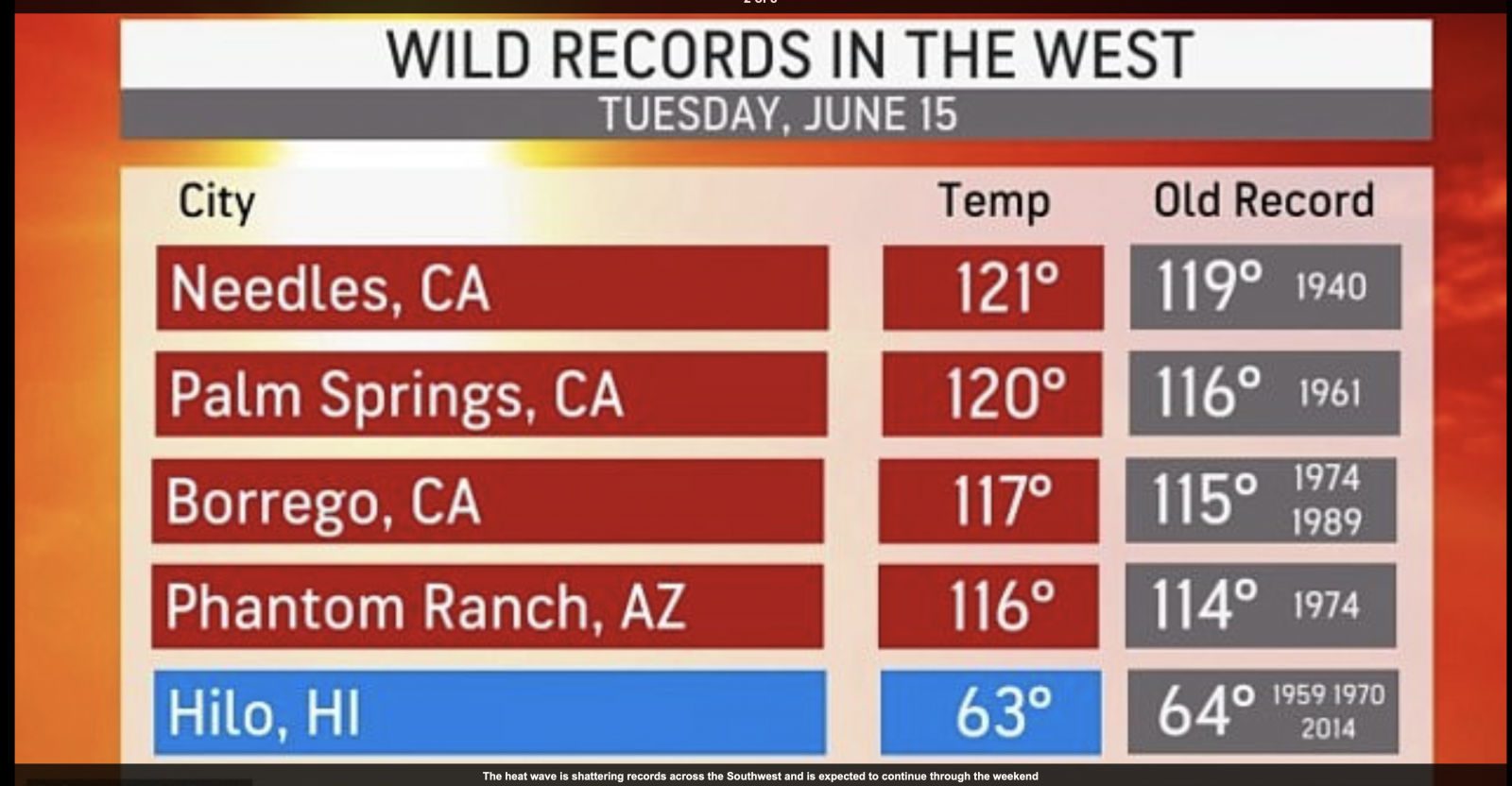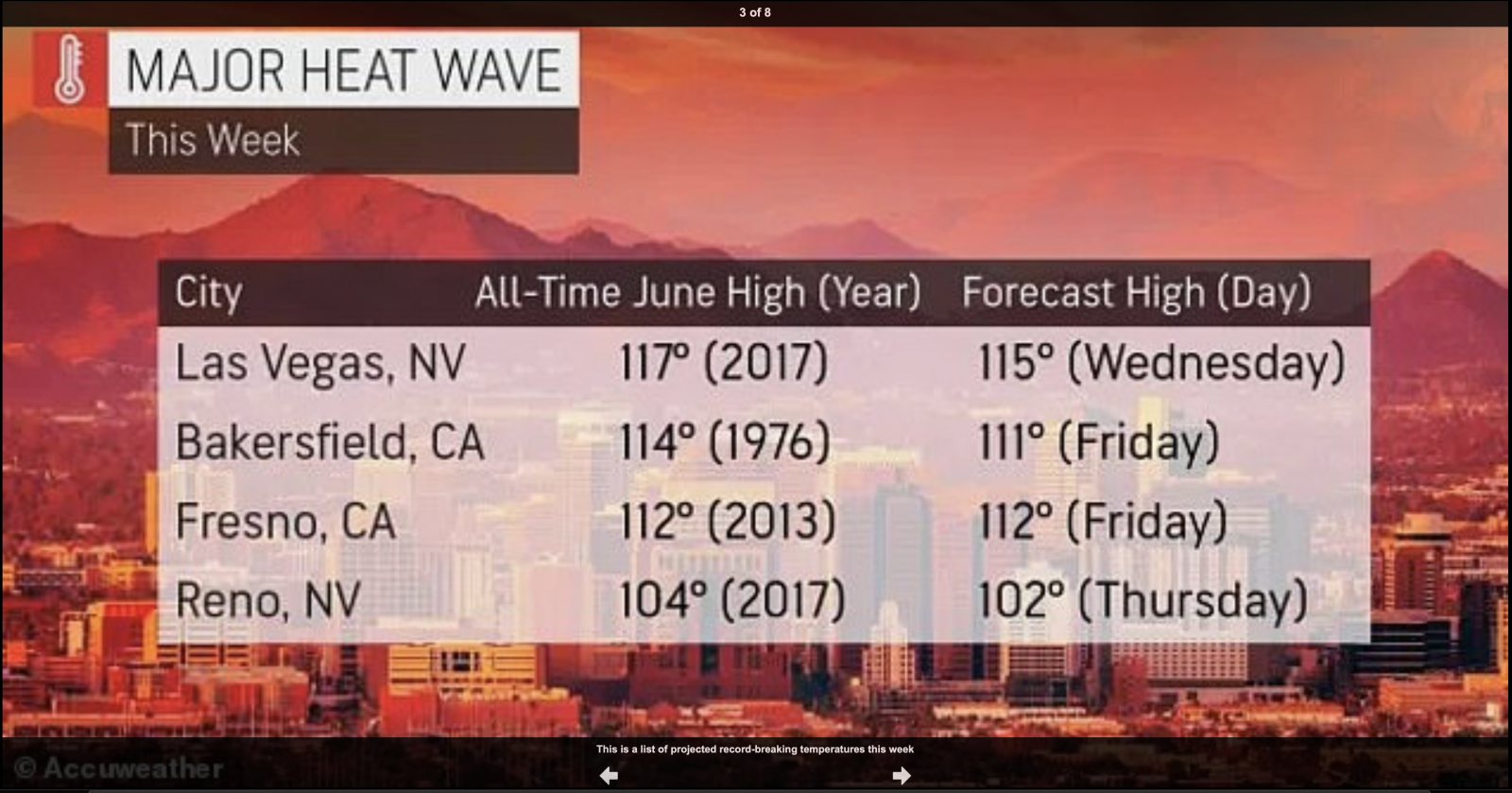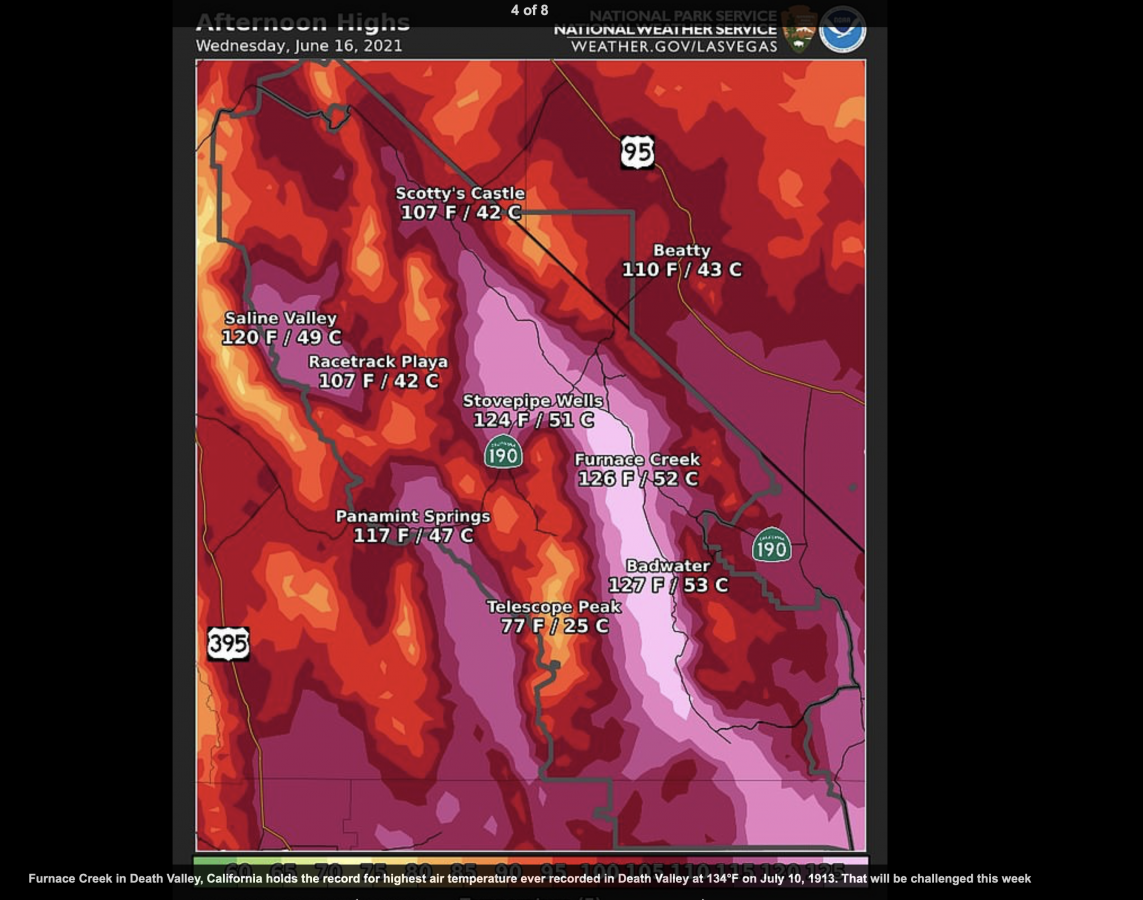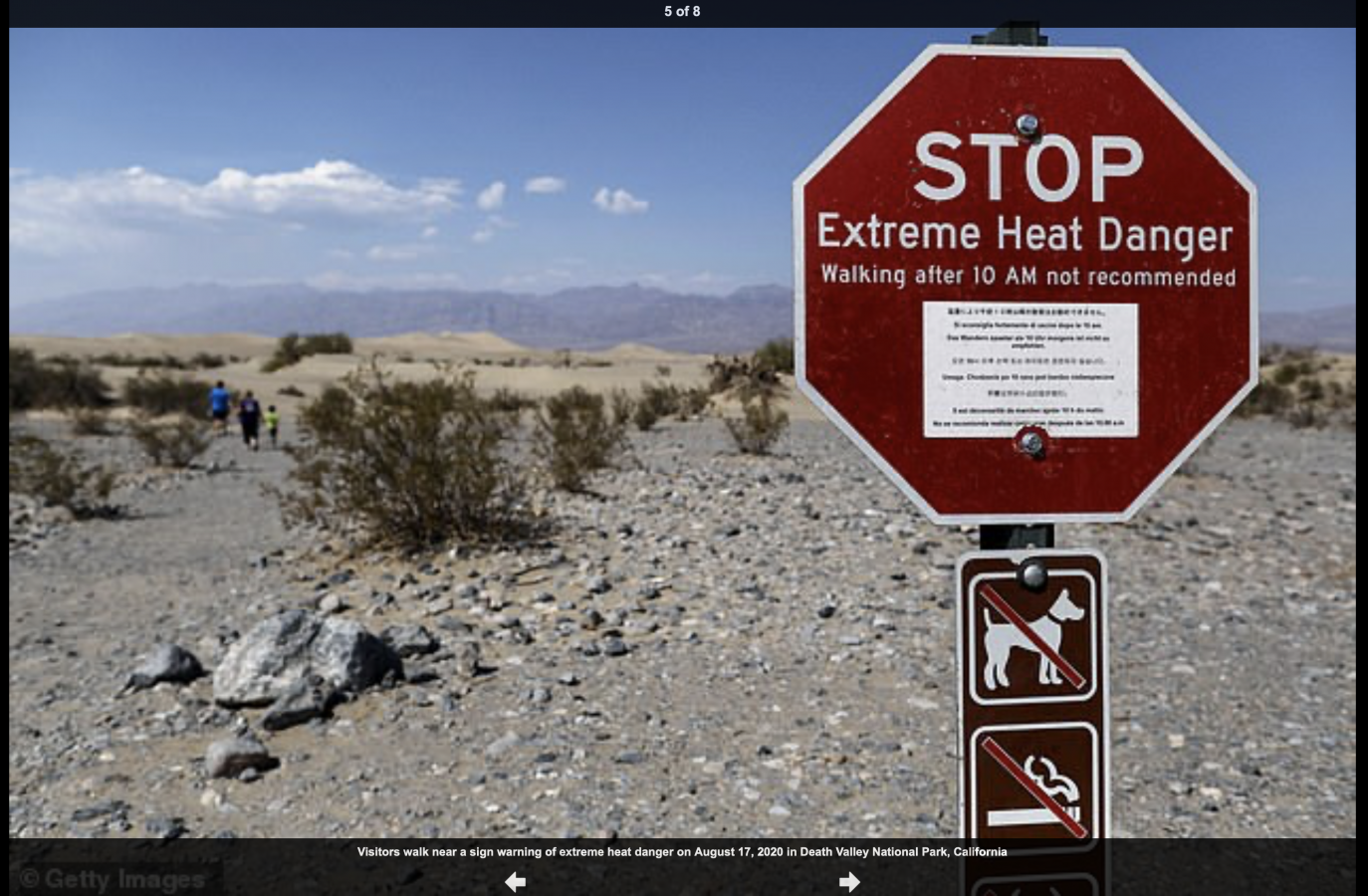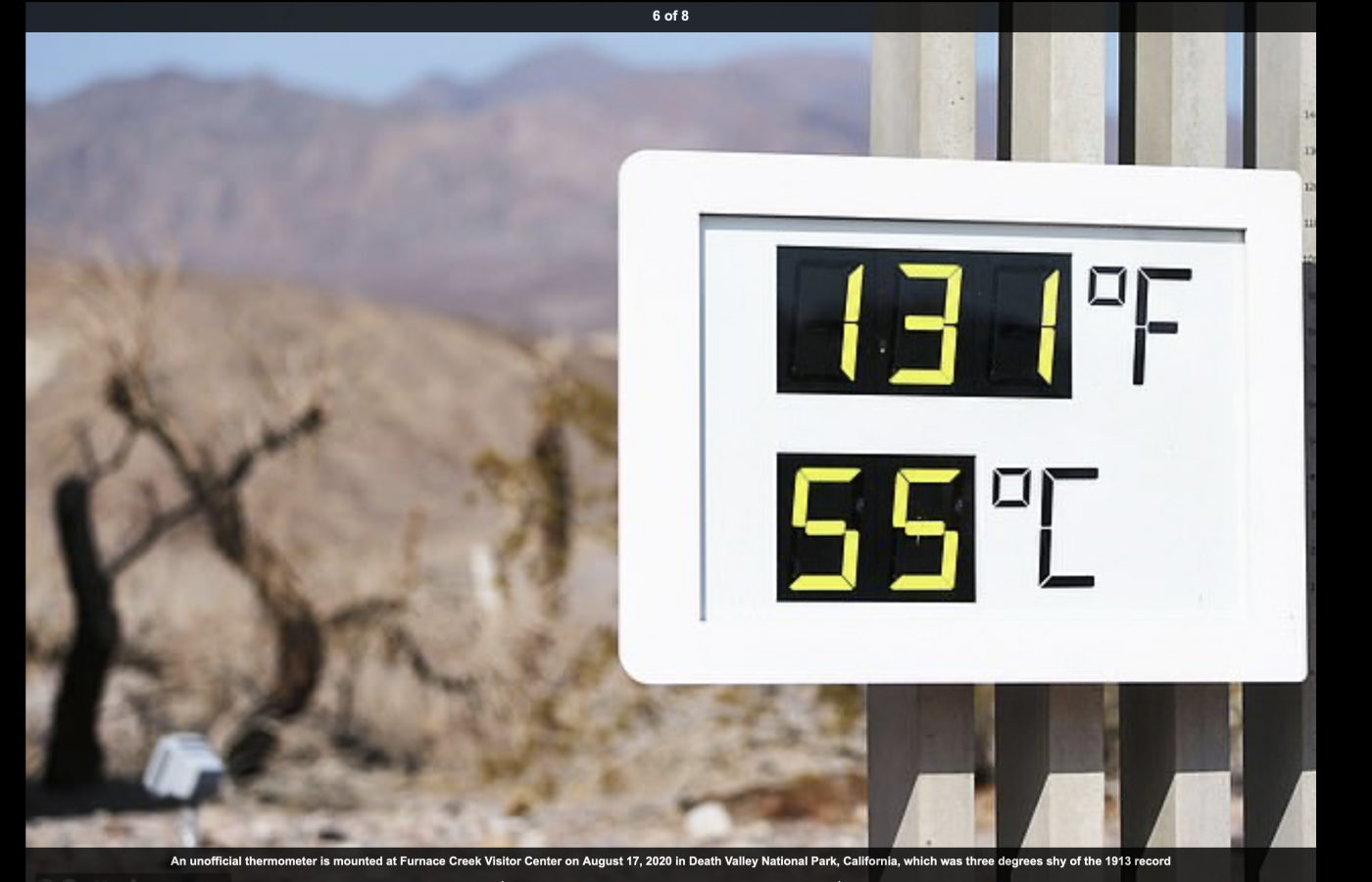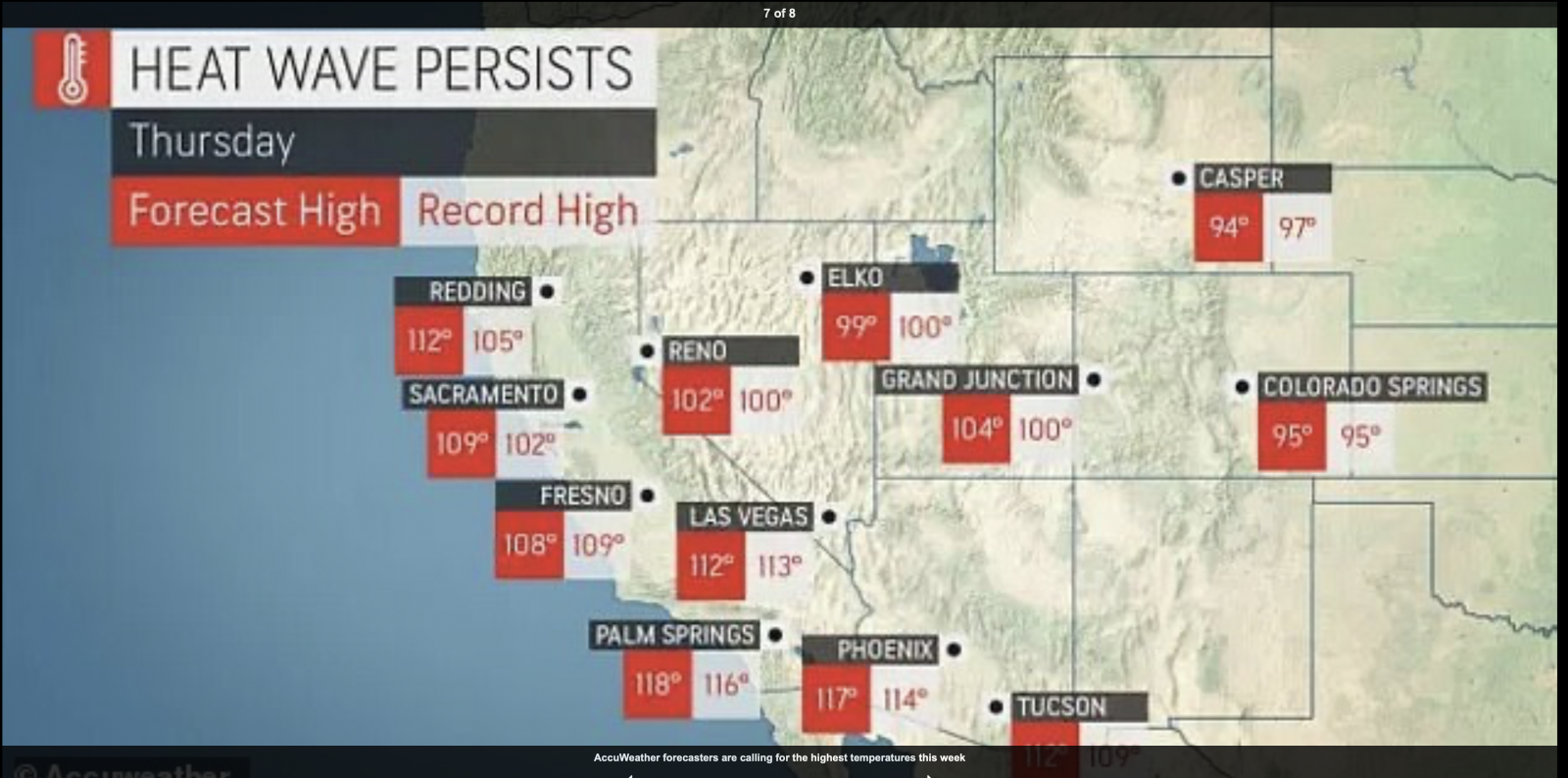Death Valley could break its own 1913 record for hottest temperature ever reported on Earth – 134 degrees Fahrenheit – this week as the Southwest is gripped by unrelenting heat wave
- The Southwest heat wave could threaten the planet’s all-time record high temperature – 134 degrees Fahrenheit – set in 1913 in Death Valley, California
- The region has been dealing with 100-plus degree heat for more than a week, and those temperatures are expected to continue through the weekend
- About 40 to 50 million people in the region are slogging through the heat wave
- The extreme heat is straining power grids and creating optimal conditions for wild fires and already causing droughts
California‘s Death Valley could soon break its own 1913 record for the hottest air temperature ever reported on Earth as an unrelenting heat wave grips the Southwest.
From Wednesday to Saturday, Death Valley temperatures could come within 10 degrees or less of that all-time high of 134 degrees Fahrenheit, which was set during a five-day heat wave in July 1913, according to AccuWeather.
The forecast predicts temperatures will reach highs in the mid-120s each day in Death Valley, which is a long, narrow basin nearly 300 feet below sea level. In comparison, the average high for mid-June is 110 degrees.
It’s a hot area because its surface is barebone rock and soil, which radiates heat back but it never escapes. The hot air is walled in by steep mountain ranges, which traps heat in valley’s depths.
The entire Southwest region has been dealing with 100-plus degree heat for more than a week, and those temperatures are expected to continue – and even rise in some areas – this weekend.
Forecasters say this current heat wave won’t just be remembered for its intensity, but also for its duration, AccuWeather meteorologists said.
It’s straining electrical grids and drying up water supplies and vegetation, which creates a combustible concoction for wild fires, and affecting 40 to 50 million people in the region.
Temperatures have already shattered dozens of record highs across the region, including California, Arizona, Montana and Idaho, and more are expected to fall this weekend, according to AccuWeather



















